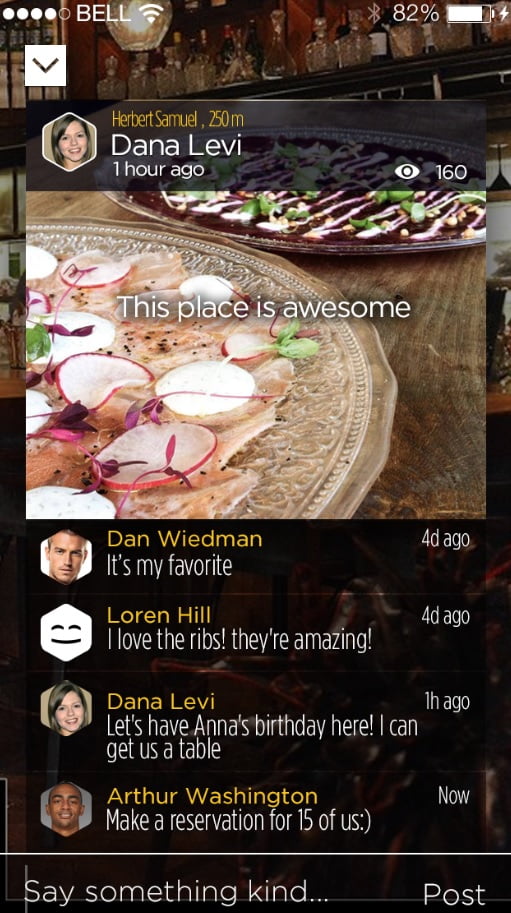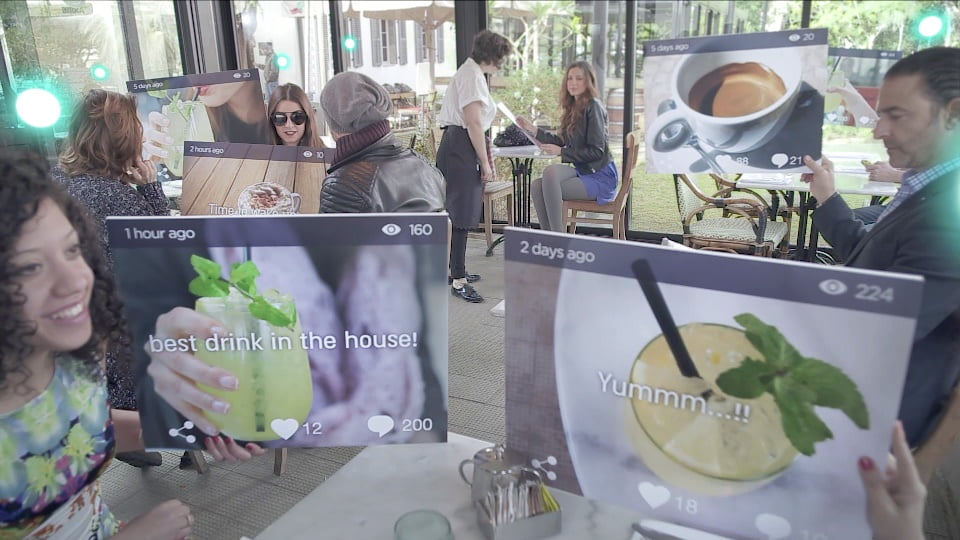Stayed in a great little hotel and want a way to share it with others? You could leave a note in the age-old visitor’s book, leave a review on a site like TripAdvisor, or even upload a photo on Instagram. With ShopCloud’s new Space Tag application, users can now tag specific places and objects to leave eternal notes in “space” for themselves or others. When other potential guests come in proximity to the hotel, they would then see your tag and image pop up.
Launched in December 2014, Space Tag is available for free on Apple’s App Store and on Google Play. CEO Gil Devora claims it is the first app that enables you to look at your space in a new way and leave your mark – for generations to come. Just snap a picture and Space Tag uses an indoor positioning system (IPS) that locates objects or people inside a building, using radio waves, and other signals collected by mobile devices (similar to Apple’s iBeacon).
SEE ALSO: Pinvolve App Turns Facebook Pages Into Pinboards
Space Tag’s creators have studied the human brain and even the Sahara Desert ant, to develop a navigation and mapping system that’s built on crowdsourcing. A large database of images and locations is provided by users of the application, which in turn provides a localized, mapped community of taggers. The app even contains a hardware-free alternative to Apple’s iBeacon, which is a Bluetooth-connected device that sends a signal and a notification to your smartphone when entering other beacons’ proximity.
Algorithm that’s based on an ant’s internal pedometer
According to Shop Cloud’s CTO Tamir Fridman, this technology is similar to the human brain. “We are often perplexed by the fact that the human brain never gets overloaded with all it does in a single moment”, he says. “The brain is capable of recognizing objects in its environment, of understanding where to go without having to question or position itself every few steps.”
During the development of Space Tag, Fridman’s team went as far as researching the Sahara Desert ant, which easily reaches its target, even though it has poor eyesight. The ant positions itself according to the sun and, contrary to humans, counts its own steps along the way. The ant appears to use an internal pedometer to count its steps in a harsh environment where odors quickly vanish, enabling it to “count back” to its nest,
This pattern of steps is translated into an algorithm, and voila, your smartphone is now an expert navigational device. Add intelligent learning tools, and your device can now identify the images of stores and restaurants around you while associating them with the correct location. You can even receive recommendations about specific dishes in a restaurant that previous guest “left” there.
Beware the Foursquare effect
Sign up for our free weekly newsletter
SubscribeDespite the team’s enthusiasm, Space Tag developers may need to learn from other location-oriented apps, which have come and gone in recent years. For example, the trendiness of Foursquare’s check-in app eventually wore off. It had to reinvent itself as it struggled to appeal to users, which are now using mostly Facebook and Instagram.
“Space Tag focuses primarily on tagging a space, not so much on the user,” Fridman explains. The goal of the app is therefore to preserve the user’s mark on that location, more so than checking in. According to Fridman, there are fewer advertising ploys in Space Tag, compared to other location-based apps.
Devora is trying to revolutionize social networking. “We believe that in five years, social networking will be localized”, he says. People will be able to experience the same space or event, yet from completely different perspectives. One person might post a picture of the food at a restaurant and comment on it, while another simply likes the overall look of the venue.
The Space Tag application certainly has much potential, but at this time, it is not not flawless. On the localized map menu, the pins reveal many tags, however, the images and captions lack focus. People tag everything from restaurants to cats, with no major location indication. There is no drop-down list that enables users to pick their venue. Alas, no epic panoramic shots of a mountain top yet. And although the main tagging screen has a small telescope that enables users to look at tags from farther away by tapping on the green virtual beacons, the tags once again lack in focus and interest. We have yet to see how ShopCloud hones the large database of tags being slowly harvested in its vortex.
SEE ALSO: iPhone App Aims To Become Foursquare For Parents And Babies
The rise and fall of check-in apps
But the app is still only in beta phase, and users can expect a pleasant concoction of more advanced technology in the future. Leaving your mark is going to become a lot more tech savvy, yet personal. “With our technology we can create a community. You feel that bond and connection and it can be anywhere you wish”, Devora says, “Users will be able to be notified of a nearby friend, and navigate to them.”
Space Tag is looking into future collaborations with retailers to create virtual shopping paths, but for now we’ll just have to be satisfied with leaving our mark everywhere we go, hoping that the next person appreciates what we have left for them.

Photos and video courtesy of Shop Cloud
Related posts

Editors’ & Readers’ Choice: 10 Favorite NoCamels Articles

Forward Facing: What Does The Future Hold For Israeli High-Tech?

Impact Innovation: Israeli Startups That Could Shape Our Future




Facebook comments